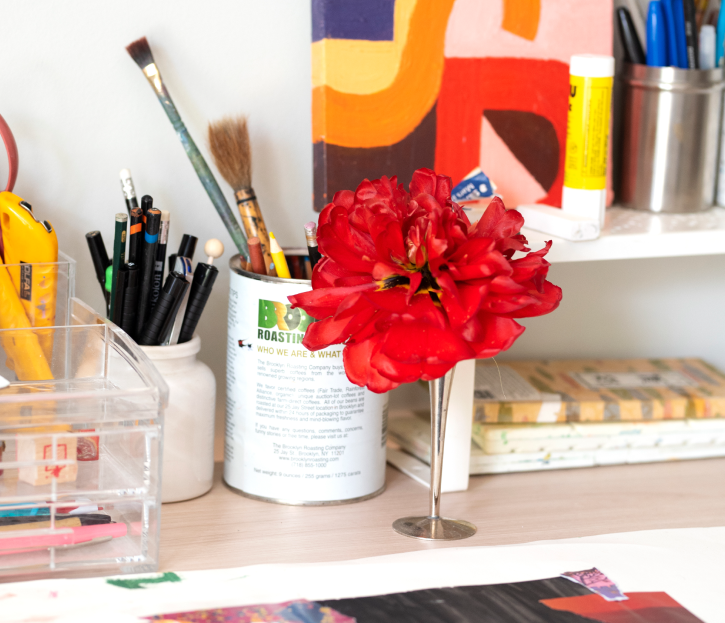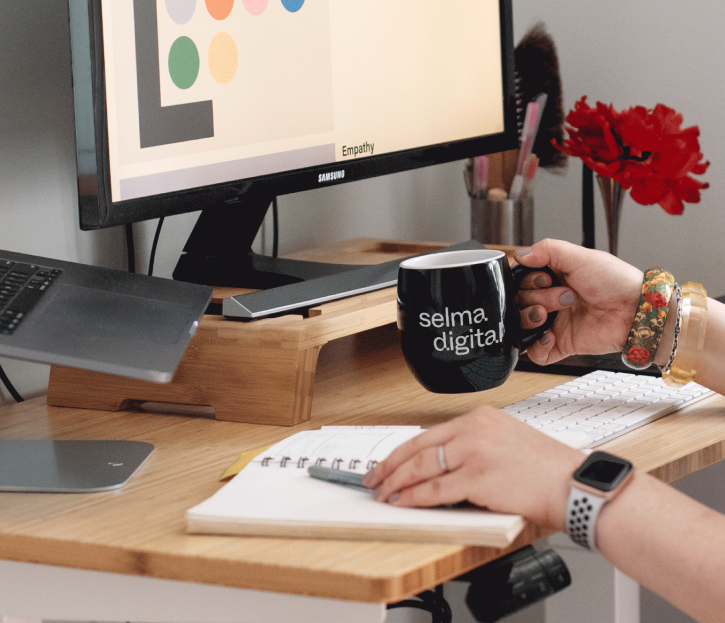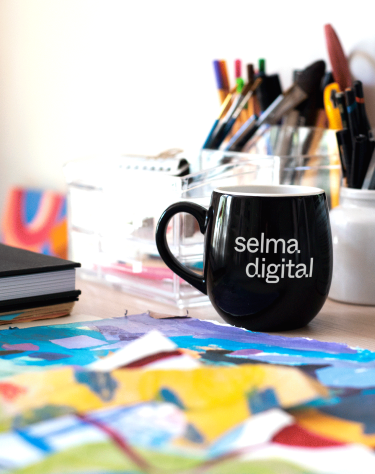Practices
Building Better Products: The Role of a Digital Design Studio in UX and Branding
A digital design studio (also known as a design agency , digital agency, or design firm) offers a wide range of services. The focus being on providing and creating cohesive, intuitive products that have aesthetic appeal while being “on brand”. This may include creating or refining the brand’s visual or product identity to align with the product’s intention.
Additionally, the goal can be on perfecting the UX and customer journey of the product. We are a creative team that provides a range of services that lead to a better product. We provide elegant solutions while connecting with users.
There are many services and methodologies that digital design studios can provide. Some are design specialists in a certain field like healthcare or finance. And some focus more on branding or graphic design. While some are research heavy and specialize in User Experience design. There are different design studios that suit an array of needs but the common thread is that digital design studios provide expert advice in the digital space.
As a digital design studio that focuses on UX (case study) and branding (case study), we are experts in the process of going from an idea to a finalized, ready to ship product. We engage in design thinking and creative collaboration with our team and stakeholders, we find an elegant design solution that matches a brand through and through. Let’s take a look a few of the key tasks in our process of digital product design:
Discovery
The purpose of the discovery phase from our design studio is to understand the problem(s) at hand and identify user needs. At this step, we also need to gather and understand business requirements. We meet with stakeholders in order to make sure the design aligns with their business plans and objectives. To do this, we conduct one-on-one or group stakeholder interviews. Specifically, the outcomes of the discovery phase are to understand business context and goals, project scope, any anticipated technical constraints, and expectations. The discovery phase is essential for creating a clear, shared understanding of the project. This sets the stage for a successful design process.
Research
Through extensive research, we can hone in on users’ needs, pain points, actions, and perspectives. Research is the backbone of UX Design. It allows us to make informed design decisions and assets to refer back to while we move forward with designs. The key goals at this step are being able to set us up to make informed decisions and be aligned with business goals. This ensures that the designs will be user-centric, while simultaneously identifying potential risks early in the process.
▪ User Research
A key way that we get information from users is to conduct user interviews. These are in-depth qualitative interviews where we get to hear from the users about not only their pain points but their emotions as well. This allows us to empathize with the users. It also allows us to design user-centric solutions. Other methods of user data collection include: surveys, contextual inquiry, or diary studies.
▪ Competitive Analysis
Competitive Analysis is very important from a market perspective. It is crucial to know how your competitors are solving users’ problems from both a UX and Business stance. Our design studio evaluates competitors’ usability, reviews or user feedback, their position in the market, and their features. From there, we can see what works well and what can subsequently be improved upon in a tangible way.
▪ Market Research
Market Research can help us get a bigger picture and understanding of what else is happening in the market. We review relevant publications, look at industry reports, and market demands. We are then able to take into account the future product as it would fit into the trajectory of an industry as a whole.
▪ Personas and Journey Mapping
Because of the research collected, we can start to visualize who our users are and what issues they run into. We build personas that represent actual users. The personas embody the traits, needs, and perspectives of the users we interviewed. We keep the personas in mind while we map the journey of our users. Along the way, accounting for the expectations and emotions when going through a workflow. This allows us to identify exact moments of conflict and then where we can better the experience.
▪ Brainstorming
Now that we have the place in the flows that are causing issues – we start to imagine how we can better the solution. Oftentimes using the exercise/question of “How Might We…” For example, “how might we help the user reach their goal of connecting more frequently with their client?.” And then brainstorming on that exact question. We go step by step through each pain point this way. This allows us to truly be set up to design a user-centric solution
Concept Development
Thirdly, concept development is a time where our design studio starts to explore and synthesize possibilities for solutions. We move forward with the most promising concepts. Concepts that are effective and viable given what we know from our research phase. From our list of ideas, we start developing concepts and produce preliminary designs. These can either with sketches or low-fidelity wireframes. This process helps us refine ideas and create detailed concepts. We can define user flows and account for user interactions as the user moves through the flow.
▪ User Flows
We create user flows to help us define each step the user takes to finish a given task within a product. User flows can be made from rudimentary boxes and arrows listing out each step. Conversely, they can be more in-depth, layout diagrams depending on the familiarity with the product. This crucial step helps in visualizing the user’s true journey while being able to catch inefficiencies.
▪ Wireframing
With the user flows set, we create low-fidelity wireframes. These highlight the layout of the important elements or features on the screen. Low-fidelity prototypes do not have design details that we will see later in the prototyping phase. While keeping things low-fidelity, we can adjust elements and iterate quickly.
▪ Sketching and Scenarios
Here we start to visualize interactions within identified scenarios that accomplish each personas goal. We create solution sketches that are more detailed and then develop specific scenarios that accomplish the goals for each of our personas. This helps us illustrate how users with interact with the product under various contexts. And helps us communicate the concept with stakeholders.
▪ Concept Testing and Stakeholder Approval
With the scenarios laid out, we connect with our clients to get their feedback to make the necessary changes. This helps us identify any issues early on while allowing us to align with the relevant parties.
▪ Design and Prototyping
The design and prototype phase in UX design involves transforming concepts from the conceptualization phase into detailed, interactive prototypes that can be tested and refined. This phase bridges the gap between idea generation and the final implementation, ensuring that the product is both functional and user-friendly.
▪ High-Fidelity Wireframing and Mockups
Once a direction is agreed upon, we move into developing high-fidelity detailed wireframes and mockup that accurately represent the final product. These include detailed UI (User Interface) elements, colors, typography, and imagery.
▪ Design Systems and Style Guides
Design systems and style guides are created to ensure consistency in graphic design and function throughout all of the designs and ensure efficiency when expanding upon initial designs. A design system has reusable components, style guides, and design principles
▪ Interactive Prototyping
Once the designs are all polished with incorporated design components, we make interactive prototypes to simulate the experience and interactions.The prototypes mimic the functionality of the product and allows users to navigate through the screens and features.
Testing
Finally, with an interactive prototype, we test the product with real users before resources are used to build the product. We can validate visual design and UX design decisions. We find any usability issues by observing their interactions with the prototype. We gather this feedback and identify ways to iterate and improve the designs. Testing is an iterative process that can have multiple rounds. With feedback we adjust the designs with potentially different styles of testing to gather different feedback. Testing methods range from usability and validation testing to A/B testing to eye-tracking testing and more.
Implementation
Lastly, once all design decisions are finalized, we collaborate with developers to ensure correct implementation of the designs. We provide detailed annotations and specifications as well as style guides and the design library. We work alongside developers throughout the implementation process and test flows and interactions to make sure the designs are feasible and align with technical requirements.
Each step of the way, our design studio works alongside our clients to create research-backed, user-centric, aesthetic designs for digital products. Interested in how we can elevate your digital product? Contact us.







